You must have experienced that movies based on real life can be more exciting and engaging because we can relate them to the real life of people and we admire historical events. We are always curious to know more. However, we must remember that fiction may occasionally outperform reality. Many times, what happens in the film is far distant from what happens in real life in order to add more drama or to make the storyline more engaging.
So here at Defused we have collected 11 movies based on true stories that were slightly changed for dramatic purposes, of course, they had to make a movie out of it. It can’t be more realistic. Keep on scrolling down below and make sure you watch it till the end.
1. Did you know that in the movie Theory Of Everything, Stephen Hawking’s love story was changed.
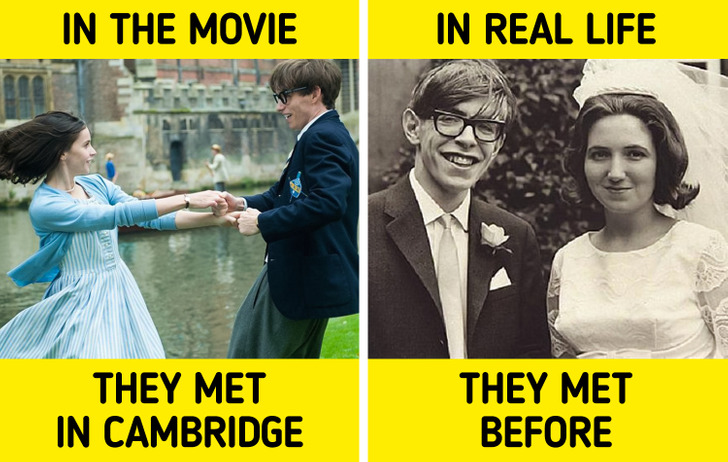
This video chronicles the love story of astrophysicist Stephen Hawking and his wife Jane, as well as the difficult struggles they experienced owing to Stephen’s degenerative sickness for over 30 years. The film depicts Stephen and Jane meeting at Cambridge University in the United Kingdom, although this is incorrect.
Jane herself said that the two met in high school at St. Albans and that their romance blossomed from there. She also noted that the film did not account for her frequent and lengthy journeys overseas, as well as how tough it was for her to take care of everything.
via: © The Theory of Everything/ Working Title Films and co-producers, © Wikimedia Commons, © CC0 1.0
2. Did you know that in the movie The Drivers rivalry in Rush was exaggerated a little bit
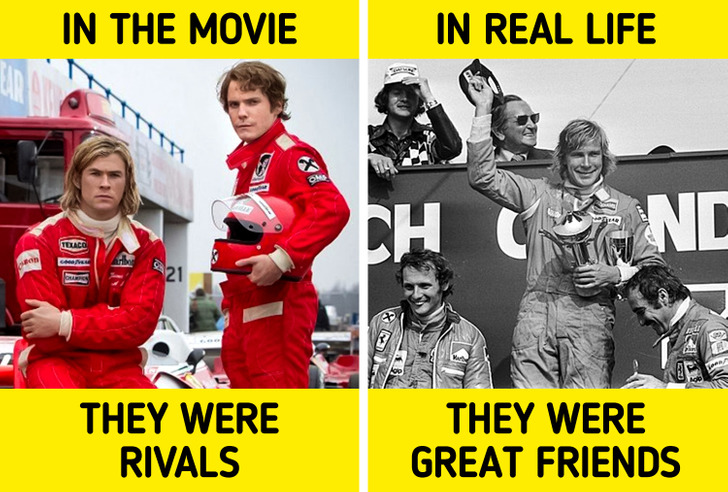
The film chronicles the life of Formula One racers Niki Lauda and James Hunt, who raced for championships in the 1970s. The competitiveness and mutual animosity are dramatized in the film, although in actual life, the drivers built a deep and enduring relationship and even shared a home.
via: © Rush/ Cross Creek Pictures and co-producers, © Anefo/ Wikimedia, © CC BY- SA 3.0 NL
3. Gladiator had various inaccuracies and changed historical facts.
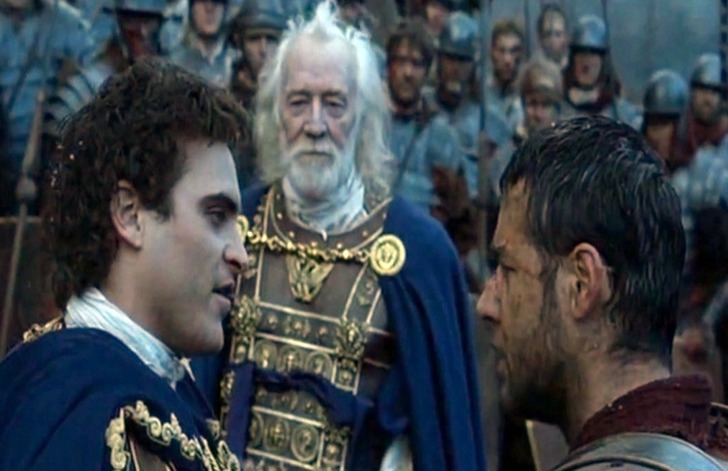
There were various flaws in the 2000 masterwork that wowed thousands of viewers. In one scenario, printed paper flyers are distributed among the Colosseum audience, which was unimaginable at the time. Another mistake is that the Colosseum was known as the Flavian Amphitheater under the Roman Empire, and its current name was popularised after the Middle Ages.
The death of Emperor Marcus Aurelius and his troubled connection with his son Commodus, played by Joaquin Phoenix, was the largest error. In reality, the Roman emperor died of natural causes, surrounded by his son to the end. Contrary to what the film portrays, Commodus had a strong connection with his father and shared control of the empire with him.
via: © Gladiator/ DreamWorks Pictures and co-producers
4. You probably didn’t know that in the movie The Imitation Games they changed the name of the machine.
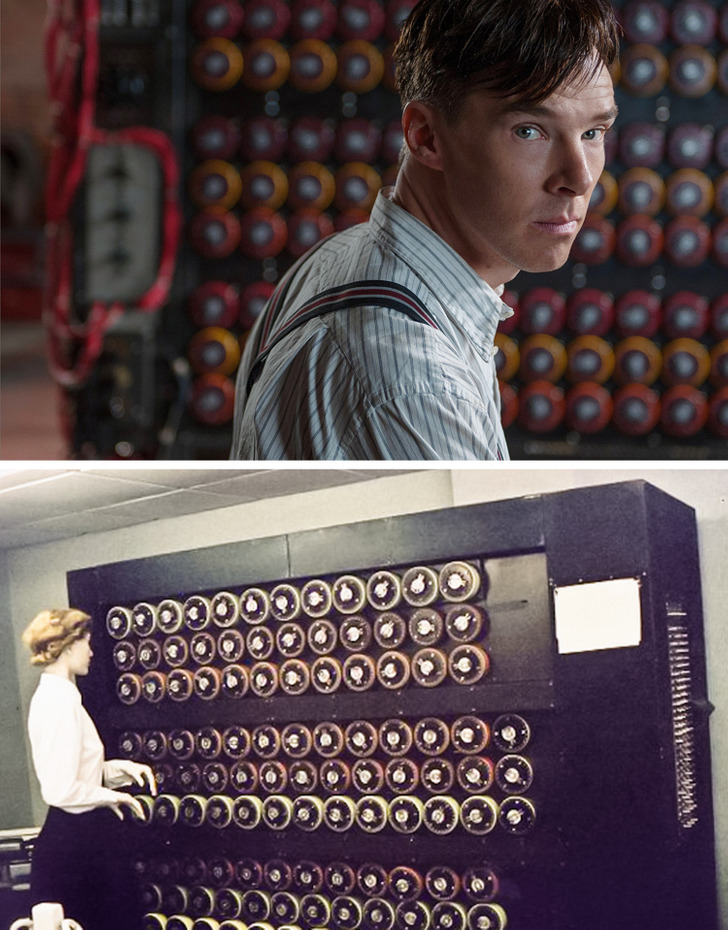
via:© The Imitation Game/ Black Bear Pictures and co-producers, © Messybeast/ Wikimedia, © CC BY 2.5
This film depicts the remarkable story of Alan Turing, the British scientist who invented the computer that decrypted German codes and therefore helped bring the war to a conclusion. The computer was dubbed “Christopher” in the film, allegedly after Turing’s youthful crush on his companion Christopher Morcom, although this couldn’t be farther from the truth. The machine was known as “The Bomb” in real life.
There is little proof that Christopher shared Turing’s affection, but they did have a strong connection, and his death severely impacted the scientist. Another truth not revealed in the film is that Turing did not construct the computer alone, but with the assistance of mathematician Gordon.
5. Did you know? William Wallace was not the real Braveheart.
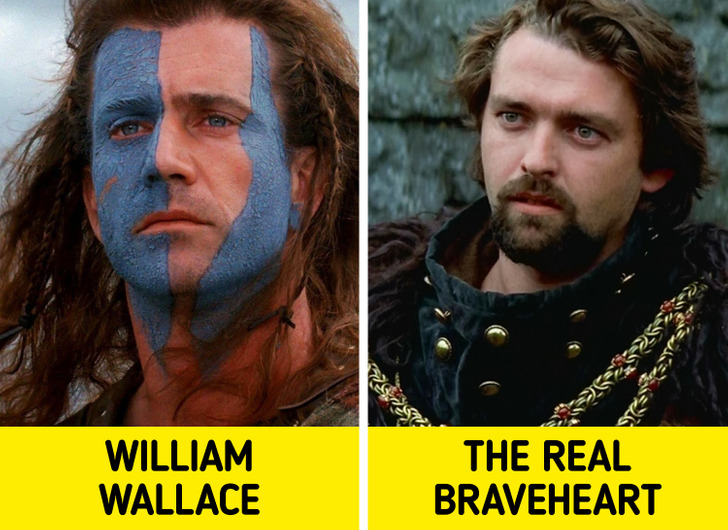
Although Mel Gibson’s legendary character, William Wallace, did exist in real life, his historical significance was overstated, and the loss of his wife was fabricated to give it a dramatic twist. The epithet “Braveheart” was given to King Robert I of Scotland, who is depicted in the film by actor Angus Macfadyen, rather than Wallace.
via: © Braveheart/ Icon Productions and co-producers
6. Django Unchained was a game changer
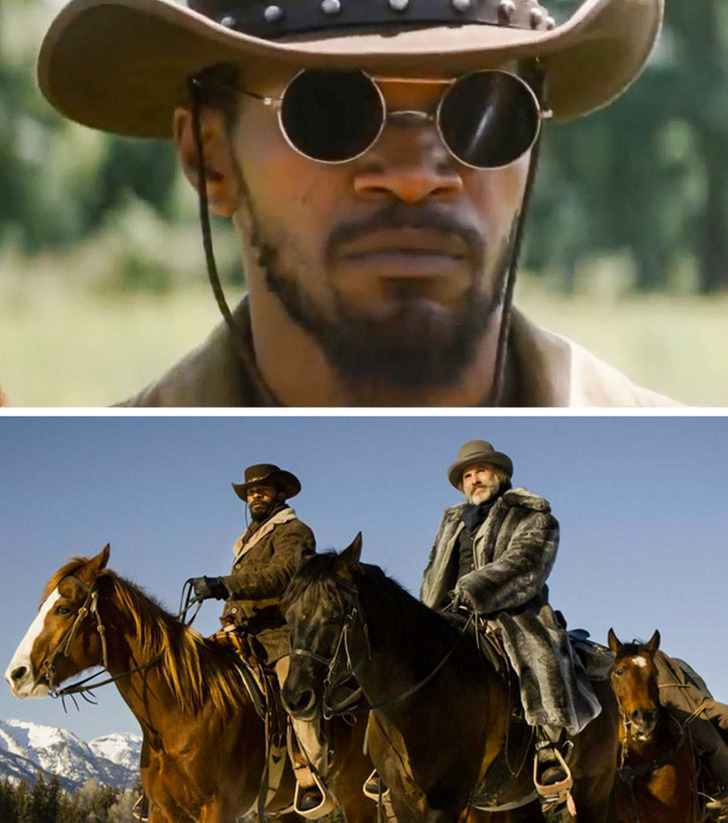
By playing Django, Jamie Foxx surely made his imprint on film, and one of the things we will never forget is his distinct aesthetic. The character wears sunglasses for nearly the whole film, which could not have happened because this item became fashionable in the 1920s, at least 60 years after the time in which the film is set.
via: © Django Unchained/ Sony Pictures Entertainment and co-producers
7. Did you know? Pirates of the Caribbean had several wardrobe and location oversights.
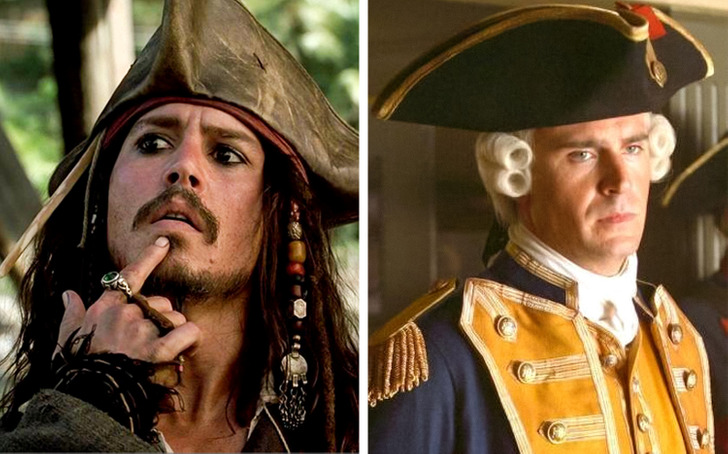
The picture was an international hit due to its humorous and daring tone, although there were several logistical and costume errors. Port Royal is portrayed in the film as a bustling metropolis and significant British port in 1720. However, the city was devastated by a devastating earthquake in 1692, and despite efforts, it was not able to restore it.
The uniforms worn by Royal Navy officers, on the other hand, did not exist at the time the film is set. Admiral George Anson established the first rules in 1748.
via: © Pirates of the Caribbean: The Curse of the Black Pearl/ The Walt Disney Studios and co-producers
8. Queen Mary of Scots and her absurd taste for piercings in Mary Queen of Scots.
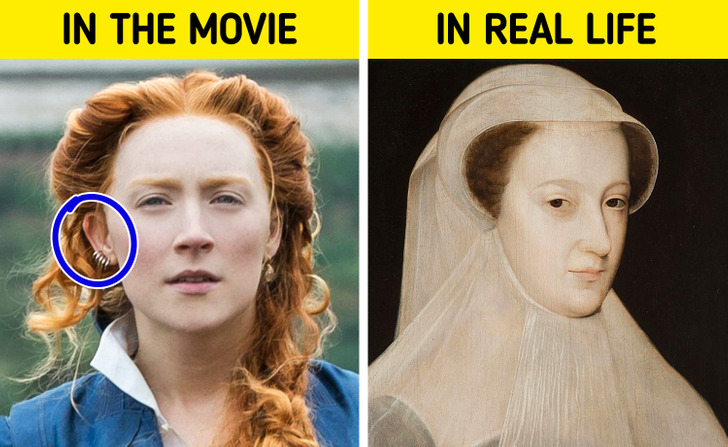
Throughout the film, we see Queen Mary Stuart wearing several earrings and ear piercings, which are much more modern embellishments, although it is uncertain if they existed in the sixteenth century when the film is set.
Furthermore, no image or book depicts Queen Mary I of Scotland with the piercings depicted in the film. What we can’t dispute is that they offer her an unrivaled sense of strength and individuality in literature.
via: © Mary Queen of Scots/ Working Title Films and co-producers, © François Clouet – The Royal Collection Trust
9. Shakespeare was not motivated to compose Romeo and Juliet by love.
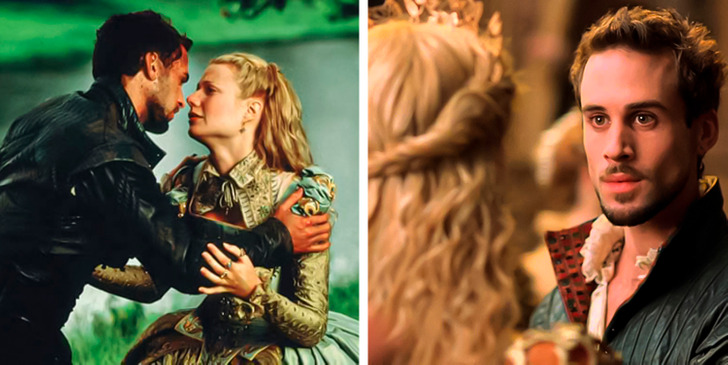
Because so little is known about William Shakespeare’s personal life, it’s only logical that the relationship recounted in Shakespeare in Love was made up. What is incorrect is that it influenced him to write his masterpiece, Romeo and Juliet. In actuality, Shakespeare based it on an existing famous play written by Luigi Da Porto, an Italian dramatist.
At the same time, the queen would be unable to go to watch a play. The theatrical groups were the ones that journeyed to the court to perform.
via: © Shakespeare in love/ Universal Pictures and co-producers
10. Apollo 13 and the forgotten hero no one talks about
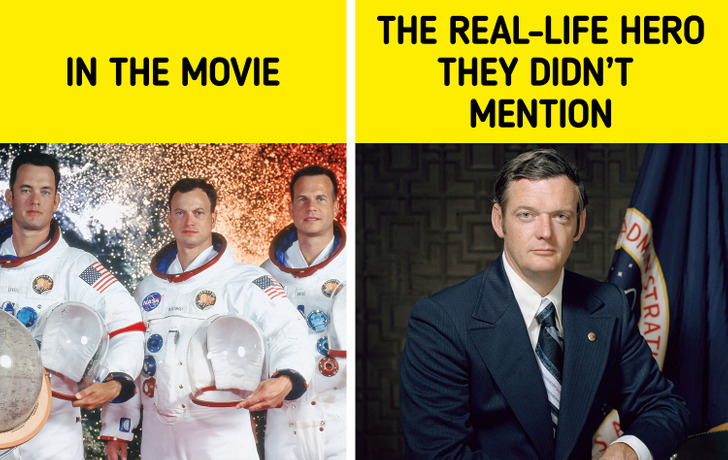
In contrast to what the movie depicts, there were never any disputes or arguments between the astronauts and the other NASA employees. Additionally, in order to keep the tension high, the answers to the issues in the movie were somewhat improvised, but in real life, there are crisis and contingency plans for any unanticipated incident.
A significant hero who helped the crew of Apollo 13 survive—Glynn Lunney, the engineer and flight director—was also left out of the movie. He made swift, intelligent decisions that contributed to the astronauts’ safe return to Earth.
via: © Apollo 13/ Universal Pictures and co-producers, © NASA
11. Did you know? The exact amount of Chris’ income was changed by The Pursuit of Happiness.
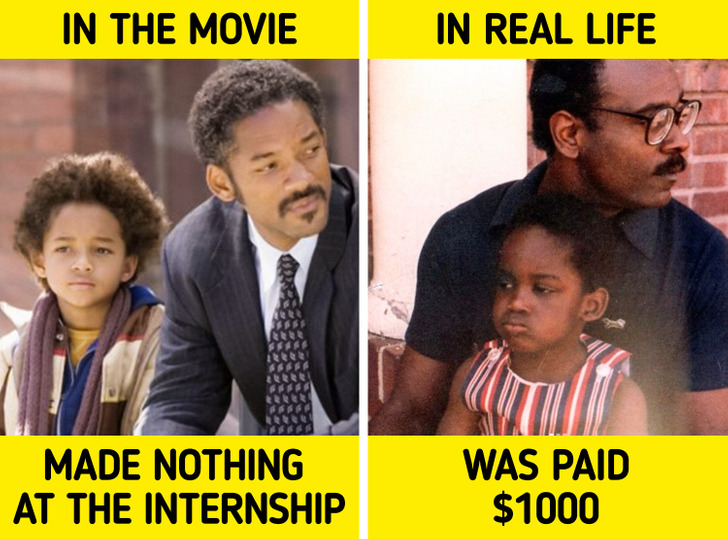
In the film that tells the story of Chris Gardner’s struggle and subsequent overcoming of his circumstances, the protagonist agrees to do an internship at a brokerage firm without a salary. This was completely exaggerated to increase the drama of the film.
Chris actually got paid a thousand dollars, which, although not a huge amount for a father taking care of his son in San Francisco, is a far cry from what the movie led us to believe.
via: © The Pursuit of Happyness/ Sony Pictures Entertainment and co-producers, © ceoofhappyness/ Instagram
Let us know what are your favorite movies based on true events. Did you know these facts about the movies above before? Don’t forget to like and share it with your friends and family. Stay tuned with Defused for more fun content.

